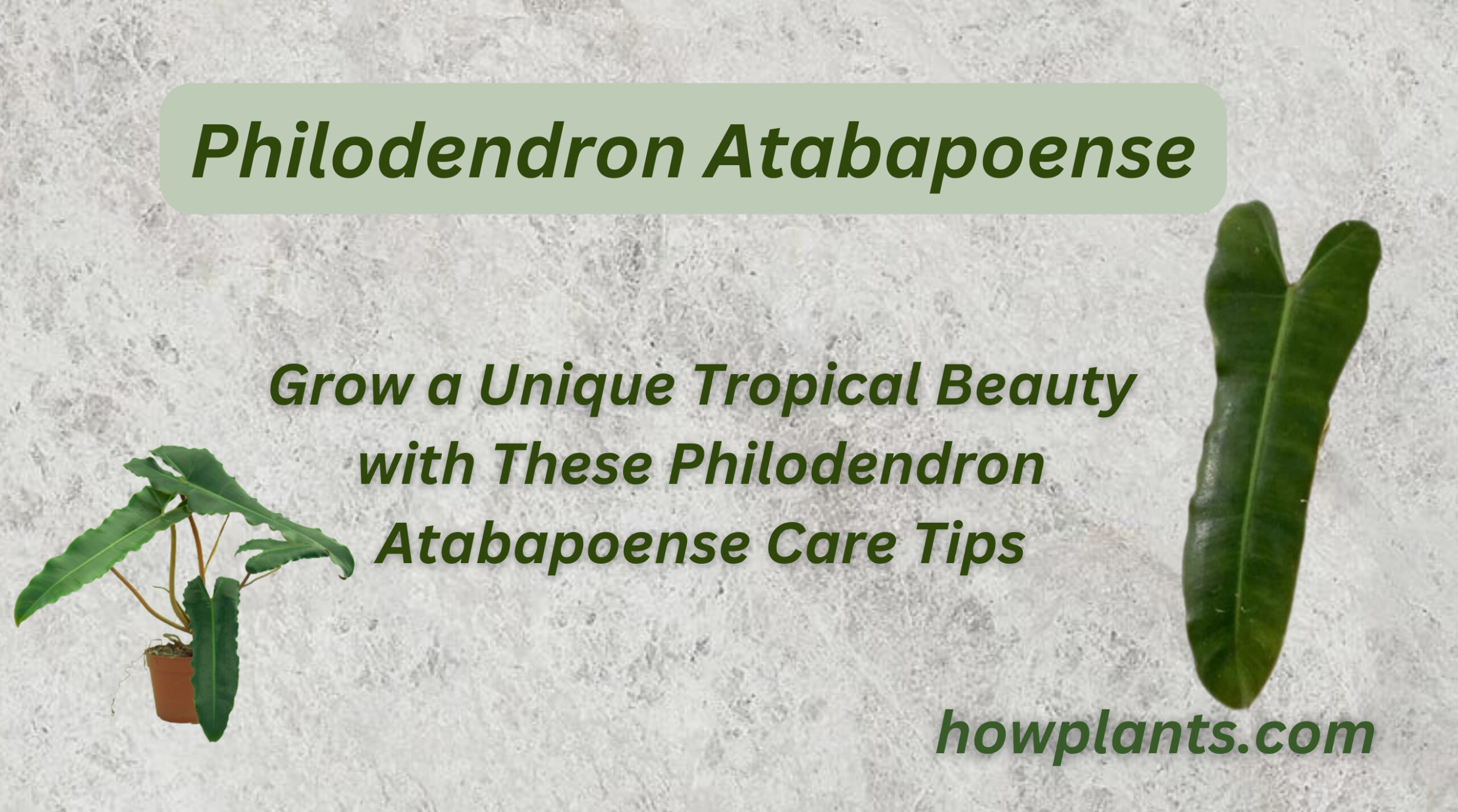Are you looking for the best care guide, information, and tips for Philodendron Atabapoense plants? Then you’ve come to the right place! In this informative guide, we’ll provide you with all the information you need to know about caring for Philodendron Atabapoense plants. From soil requirements to tips for keeping your plant happy and healthy, you’ll find everything you need to know here. So read on to learn more about these beautiful and interesting plants
What is Philodendron Atabapoense?
Philodendron Atabapoense is a species of philodendron native to the Atabapo Mountains in Ecuador. It is the only known species in the genus Philodendron. The plant is unusual in that it is the only known species in the family Philodendronaceae that does not produce flowers. Instead, it produces inflorescences of long, thin, greenish-white stems that may reach a height of 2.5 m. The inflorescences are pollinated by beetles, and the fruit is a capsule that contains several seeds.
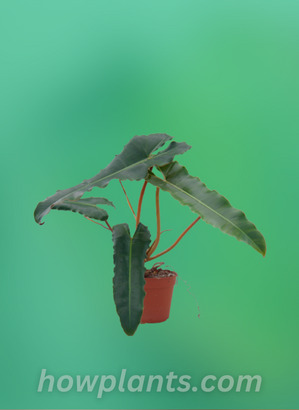
Origin and Family of Philodendron Atabapoense
Philodendron Atabapoense is a species of flowering plant in the Araceae family. It is endemic to Ecuador. Its natural habitat is subtropical or tropical moist montane forests. It is threatened by habitat loss.
Size of Philodendron Atabapoense Plant
The size of the Philodendron Atabapoense plant can vary depending on the growing conditions. In general, the plant can grow to be between 20-30inches..
The plant leaves that are ovate in shape and have a blade that is 1.5-2.5 cm wide. The flowers that are produced on the plant are pink in color and have a diameter of 1.5 cm. The flowers are pollinated by bees and the fruit that is produced is a pod that is 2 cm long and 1 cm wide.
| CHARACTERISTICS | PHILODENDRON ATABAPOENSE |
|---|---|
| Origin |
|
| Scientific name |
|
| Other names |
|
| Family name |
|
| Shape of leave |
|
| Color of leaves |
|
| Plant type |
|
| Best placement in house |
|
| Soil |
|
| Growth rate |
|
| Temperature |
|
| pH |
|
| Humidity rate |
|
| Watering conditions |
|
| Toxicity status |
|
| Symptoms of toxicity |
|
| Fertilizer |
|
| Pests |
|
Care Needs for Philodendron Atabapoense
Philodendron Atabapoense loves humidity and requires dry soil to grow for the whole year. It is used in traditional medicine in Ecuador and is used to treat a variety of conditions such as headaches, fever, and diarrhea. As an indoor plant it is preferred to water it when the top two layers of the plants get dried.
What are the Environmental Conditions best for Atabapoense?
The best environmental conditions for Philodendron Atabapoense are moderate temperatures and high humidity.
Growth Rate of Philodendron Atabapoense
The growth rate of Philodendron Atabapoense is slow, but steady. This plant grows best in moist, well-drained soil with plenty of sunlight. It is tolerant of a wide range of soil conditions, but is not tolerant of cold weather. It grows rapidly in summer season.
Pots that are best for growing Philodendron Atabapoense
There are a few different types of pots that are good for growing philodendrons. One type of pot is a clay pot. Clay pots are good for growing philodendrons because they are porous and allow the plant to get plenty of water and air.
Another type of pot is a plastic pot. Plastic pots are good for growing philodendrons because they are lightweight and easy to move.
When to do repotting of your Philodendron Atabapoense?
If you notice any of the following symptoms, it is important to repot your Philodendron Atabapoense to a professional:
- The leaves are wilting or drooping
- The plant is not growing
- The plant is developing brown patches on the leaves
- The plant is developing black spots on the leaves
- The plant is developing lesions on the leaves
The soil used for repotting Philodendron Atabapoense must be fresh and rich of nutrients so that the plant can get maximum nutrients and grow fastly and densely.
Soil composition that is best for Philodendron Atabapoense
The soil composition that is best for Philodendron Atabapoense is a well-drained, sandy loam with a pH between 6.0 and 7.5. This type of soil is perfect for this type of plant because it is able to uptake nutrients and water quickly. Additionally, the soil is able to retain moisture, which is important for this plant because it is often in areas that are dry.
You can also make your own soil by mixing peat moss, orchid bark, vermiculite and perlite. It will contain all essential nutrients for ideal growth of your plant.
Ideal pH for Philodendron Atabapoense?
The ideal pH for Philodendron atabapoense is 6.5 to 7.5. This plant is tolerant of a wide range of pH levels, making it a good choice for anyone who wants a plant that can handle a variety of conditions. It the pH is low, you can raise it by using baking soda and wood ash. If your soil is too much alkaline then use sulfur and aluminum sulghate to make it lower.
Water Requirements and when to water the Philodendron Atabapoense
The water requirements of Philodendron Atabapoense are not well known, but it is likely that they are similar to other Philodendrons. A good rule of thumb is to water your Philodendron every two to three days, depending on the humidity and temperature. And in summer season water the plant when the top two layers of soil become completely dry as they do not like too much moisture.
Cold tolerance of Philodendron Atabapoense
Philodendron Atabapoense is a popular houseplant that can tolerate a range of temperatures, making it a good choice for those who live in colder climates. This plant is also tolerant of low light levels and can be grown in a variety of soils.
Light Requirements for Philodendron Atabapoense
The light requirements for Philodendron Atabapoense are moderate, with a requirement of 600-800 hours of light per year. This plant grows best in bright, indirect light, but can also tolerate some direct sunlight. If the leaves of the plants are losing their color it means that the plant is facing too much light and it’s time to change the position of the plant. But if the stem of the plant is losing its strength and it is becoming leggy it means the plant is facing deficiency of light. Plant should be placed at the east-west facing window.
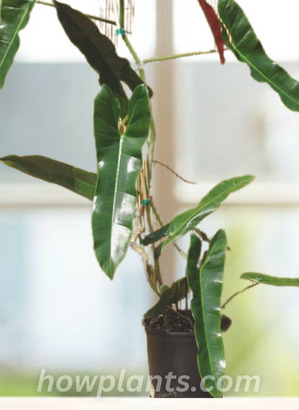
Fertilizers that are suitable to enhance the growth: When to give fertilizer to Philodendron Atabapoense
Fertilizers suitable for the growth of Philodendron Atabapoense include those with a nitrogen, phosphorus, and potassium (N-P-K) ratio of 3:2:1. The best time to give fertilizer to Philodendron Atabapoense is during the active growing season, which typically runs from early spring to early fall in most parts of the world.
How much percentage of Humidity and Aeration is ideal?
The ideal humidity and aeration levels for Philodendron Atabapoense vary depending on the climate and growing conditions of the individual plant. In general, a humidity level of 50-60% and an aeration level of 2-3 times per week are recommended.
How to propagate Philodendron Atabapoense?
Propagating a Philodendron Atabapoense is easy. The easiest way to propagate them is by taking cuttings from a healthy plant and planting them in soil. You can also propagate them by rooting them in water.
Steps of Propagation through stem cutting in soil
Propagation of Philodendron Atabapoense through stem cutting in soil:
- Gather stem cutting materials.
- Dig a hole in the soil that is large enough to fit the stem cutting in it.
- Cut the stem cutting off at the ground level having nodes on it.
- Put the stem cutting in the hole.
- Fill the hole with soil.
- Water the plant.
Steps of Propagation of Philodendron Atabapoense through stem cutting in water
- Gather philodendron stem cutting material.
- Cut philodendron stem cutting material into desired length having nodes on it.
- Fill a pot or container with water and place philodendron stem cutting material into the water.
- Allow the philodendron stem cutting material to soak for a few hours.
- Drain the water from the pot or container and discard the philodendron stem cutting material.
- Plant the philodendron stem cutting material in a pot or container filled with fresh potting soil.
- Water the philodendron stem cutting material regularly and watch it grow!
Steps of propagating through air layering technique
Air layering is a propagation technique used to grow philodendrons.
- The technique involves taking stem cuttings from a healthy philodendron.
- Planting them in moist sand or soil.
- The cuttings are then wrapped in a moist paper towel and placed in a plastic bag.
- The bag is then sealed and left in a warm place to encourage root growth.
- Once the roots have grown sufficiently, the propagated plants can be transferred to a pot and planted in the ground.
Steps of propagating through division technique
- First make a small cut in the stem near the base with a sharp knife. Make sure to remove all of the old roots and soil.
- Next, place the cutting in a pot of fresh soil and water it well.
- Place the pot in a warm place and wait for the cutting to grow roots.
- Once the roots have grown, carefully divide the plant into two or three pieces.
Philodendron Atabapoense’s Flowers Size, Shape and when they grow?
Philodendron atabapoense flowers are typically small and have a shape that is either heart-shaped or ovate. They grow in the wild typically from March to May.
Toxicity Status of Philodendron Atabapoense Plant
The toxicity status of Philodendron Atabapoense plant is not currently known. However, the plant is known to contain phytochemicals and calcium oxalate crystals that may have toxic effects in human beings as well as for the pet animals. Therefore, it is important to avoid contact with the plant if you are concerned about your health.
Pest that can Attack Philodendron Atabapoense
The Philodendron atabapoense is a popular houseplant that can be attacked by a number of pests. These pests can include fungus giants, aphids, mealybugs, scale insects, and spider mites. Aphids are the most common problem, as they can cause the plant to lose its leaves and produce a sweet odor. Mealybugs are also common, as they can cause the plant to produce a sticky substance on its leaves. Scale can cause the leaves to turn yellow and fall off, and spider mites can cause the plant to produce a web on its leaves.
What are fungus gnats? How they attacks Philodendron Atabapoense and what to do if gnats attack the Plant?
Fungus giants are a type of fungus gnat that can attack Philodendron Atabapoense. Eggs of these fungus gnats are laid into the soil where these eggs take only a few days and develop into larvae. These larvae bind to the soil of the plant and start taking the nutrient of the plant.
If you observe that your Philodendron Atabapoense is becoming yellow and have started drooping of leaves at the same time there are some grayish insects flying at the pots edge., it means your plant has got the attack of fungus gnats.
The best way to deal with a fungus giant attack is to remove the gnat population before it can do any damage. To do this, you will need to identify the gnat population and then use a pesticide or insecticide to kill them.
One way to control it is by dring its larvae by increasing the time interval of watering the plant. As you give the dry environment to the plant the larva and eggs of fungus gnats will start to dry out and they could not survive.
What are White flies? How they attacks Philodendron Atabapoense and How to get rid?
Whiteflies are small, winged insects that feed on the nectar of flowers. They can be a nuisance to plants, as they can cause leaves to curl and turn yellow. Whiteflies are most commonly found on Philodendron Atabapoense, a popular houseplant.
To get rid of whiteflies, you can use a insecticide or a natural insecticide. Insecticides can be applied directly to the plant, while natural insecticides can be applied to the soil around the plant.
What are Mealy bugs? How they attack the Philodendron Atabapoense and how to get rid?
Mealy bugs are small, black bugs that feed on plant sap and take plant nutrients. They can attack the leaves and stems of the Philodendron Atabapoense, causing them to turn yellow and become slimy and result in stunt growth in plants.
To get rid of mealybugs, you can treat the plant with a pesticide specially diluted neem oil or use a water spray to wash them away. You can also wash your plant with isopropyl alcohol and isolate your infected plant from the healthy plants.
What is Root rot, how it is harmful to Philodendron Atabapoense and what to do if it attacks your Plants?
Root rot is a common problem with philodendrons. It is caused by a fungus, and it is harmful to the plant.
If the fungus attacks the root system, the plant will not be able to get water and nutrients, and it will die. The best way to prevent root rot is to keep the plant well-watered and fertilized. If you notice that your philodendron is showing signs of root rot, you should remove the affected plants and replace them with new ones.
Other problems related to Philodendron Atabapoense
The Atabapoense Philodendron is a critically endangered species of Philodendron. It is endemic to the Atabapo region of Ecuador. The Atabapoense Philodendron is threatened by habitat loss, poaching for its flowers, and the spread of the deadly Phytophthora cinnamomi fungus.
Why are leaves of Philodendron Atabapoense starting to droop? And how to avoid it?
The leaves of Philodendron Atabapoense start to droop because the plant is experiencing a lack of water. The leaves are unable to absorb water from the air due to the high humidity levels in the area.
There are a few ways to prevent leaves from drooping in Philodendron Atabapoense. One way is to prune the plant back regularly, as this will help to keep the plant’s structure strong. Another way to prevent leaves from drooping is to water the plant regularly, as this will help to keep the plant’s roots moist. Finally, you can also try to fertilize the plant regularly, as this will help to promote growth.
Comparison of Philodendron Atabapoense with other Plants
Atabapoense vs Philodendron Billietiae
The Philodendron Atabapoense is a relatively new philodendron species that is growing in popularity among collectors and enthusiasts.
The Philodendron Billietiae is a well-known and popular species of philodendron, but it is not considered a new species. There are some minor differences between the two plants, but they are not considered to be separate species.
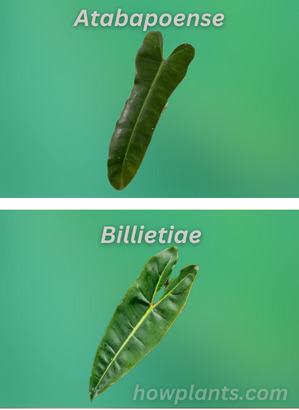
Atabapoense vs Philodendron Mexicanum
The Philodendron Atabapoense is a smaller, more compact plant that can be grown indoors or outdoors. It is hardier than the Mexican Philodendron, which is best grown indoors in a warm, humidity-rich environment.
The Philodendron Mexican is a more common plant and can be found in most garden centers. Both plants are easy to care for, requiring little water or fertilizer. They are also tolerant of a wide range of climates.

Atabapoense vs Philodendron Mamei
The Philodendron Atabapoense is a smaller and less-known relative of the popular Mamei Philodendron. It is native to the Atabapo region of Ecuador and has a more compact growth habit than the mamei. The atabapoense philodendron is distinguished by its dark green leaves and yellow flowers. It is also harder to grow than the mamei, requiring more consistent moisture and a more acidic soil.
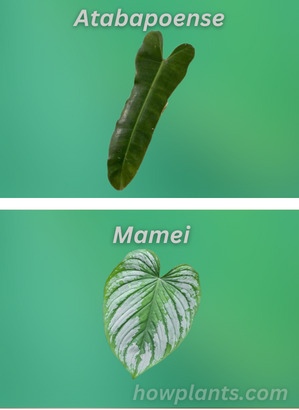
Atabapoense vs Philodendron Mayoi
The Philodendron Atabapoense is a smaller, more compact variety of philodendron than the mayoi. It typically has a more compact growth habit, is less vigorous, and produces smaller flowers. The mayoi is a taller, wider variety with a more open growth habit and larger flowers.
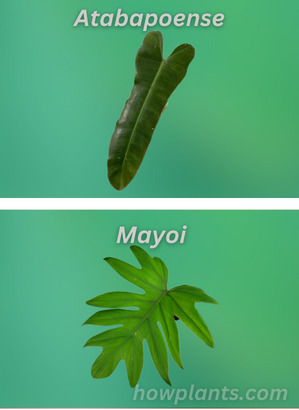
Atabapoense vs Philodendron Pastazanum
Philodendron Atabapoense is a beautiful, well-known species of philodendron. It is native to the Atabapo region of Ecuador. Pastazanum is a less common philodendron, native to the Mexican state of Puebla.
Both species are easy to grow, but Philodendron Atabapoense is particularly popular for its large, colorful leaves and fragrant flowers. Pastazanum is less common, but has smaller leaves and flowers that are less brightly colored.
Some people prefer Philodendron Atabapoense because of its beauty, while others prefer Pastazanum for its smaller leaves and flowers that are less colorful. Either species can be a great addition to any home garden.
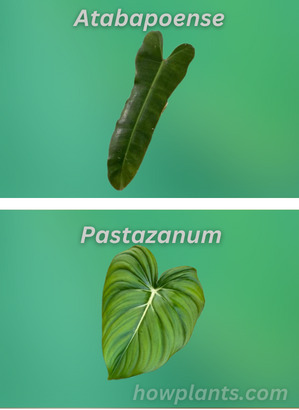
Atabapoense vs Philodendron Pedatum
The philodendron Atabapoense is a species of philodendron that is native to the Atabapo region of Ecuador. It is distinguished from other philodendrons by its large, heart-shaped leaves and its red flowers. The Pedatum is a species of philodendron that is native to the Pedernales region of central Mexico. It is distinguished from other philodendrons by its small, round leaves and its white flowers.

Atabapoense vs Philodendron Spiritus Sancti
The Philodendron Atabapoense is a species of philodendron that is native to the Atabapo region of Ecuador. This species is distinguished from other philodendrons by its large, heart-shaped leaves and its fragrant flowers.
The Spiritus Sancti is a species of philodendron that is native to the Santa Catarina region of Brazil. This species is distinguished from other philodendrons by its smaller leaves and its non-fragrant flowers.
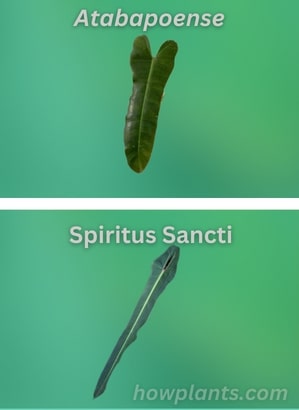
Atabapoense vs Philodendron Burgundy
The Philodendron Atabapoense is a smaller, more compact plant than the Philodendron Burgundy. It has a more rounded, cone-shaped stem with smaller leaves and flowers that are a brighter red than the burgundy. The Atabapoense is native to the Brazilian Amazon rainforest, while the Burgundy is native to the Caribbean.
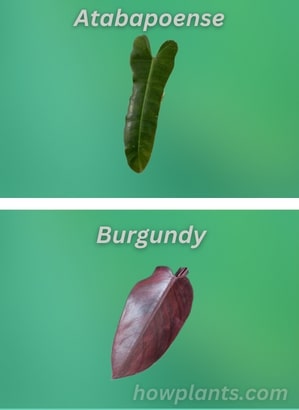
Atabapoense vs Philodendron Bernardopazii
The Philodendron Atabapoense is a relatively new species of philodendron that was first discovered in the Atabapo Mountains of Ecuador in 2006. This species is distinguished from other philodendrons by its unusual, heart-shaped leaves and striking red flowers.
The Philodendron Bernardopazii, on the other hand, is a well-known and common species of philodendron that is native to the Philippines. Both of these species are attractive and easy to grow, and make great additions to any home garden.
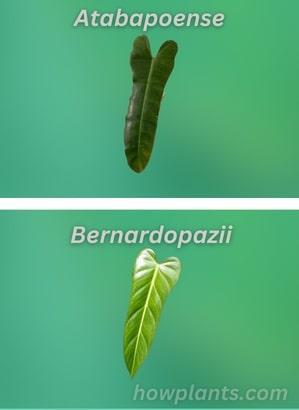
Summary
In conclusion, Philodendron Atabapoense is a unique species of philodendron native to the Atabapo Mountains in Ecuador. It is the only known species of its genus, and does not produce flowers, but instead, produces long, thin, greenish-white stems that may reach heights of 2.5 meters. This species is pollinated by beetles, and the fruit it produces is a capsule containing several seeds. This species is an interesting example of plant adaptation and is worth further study.
